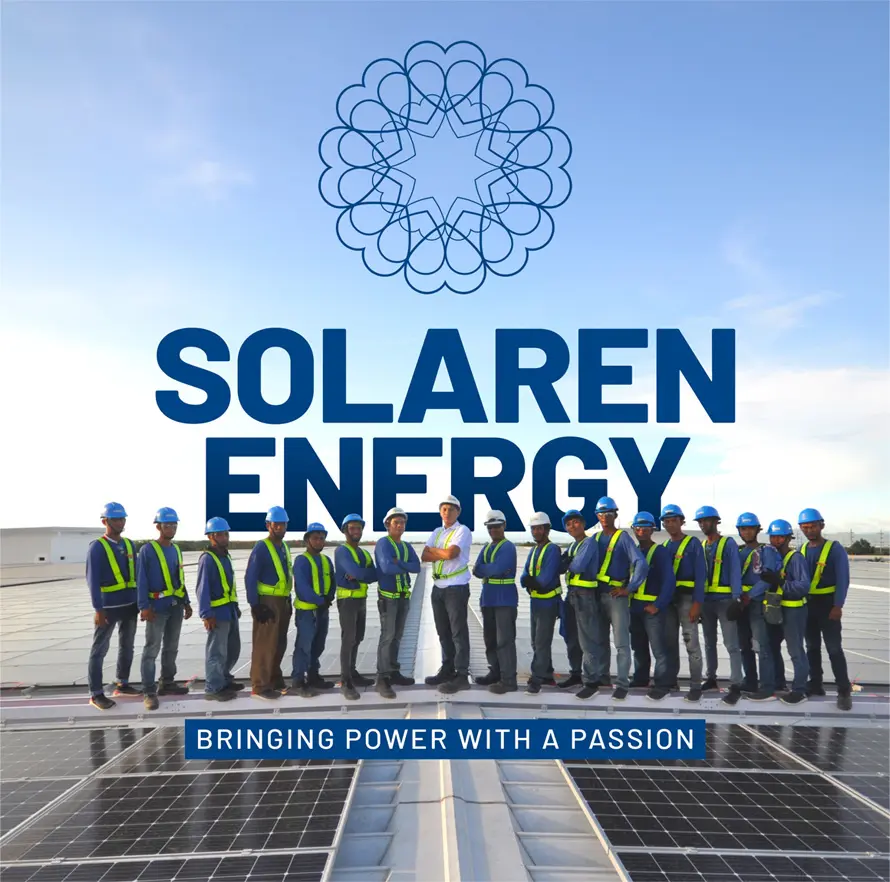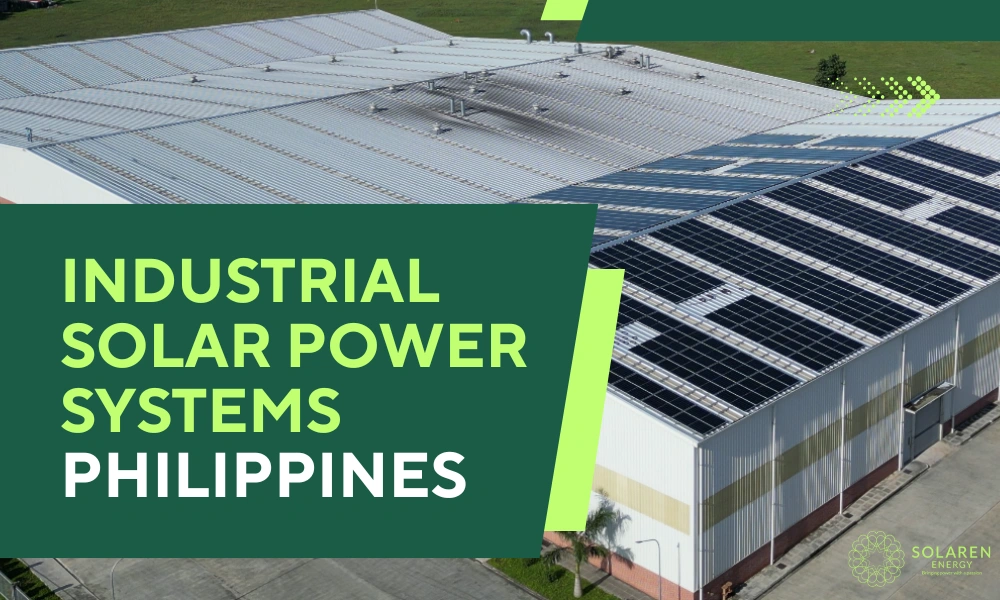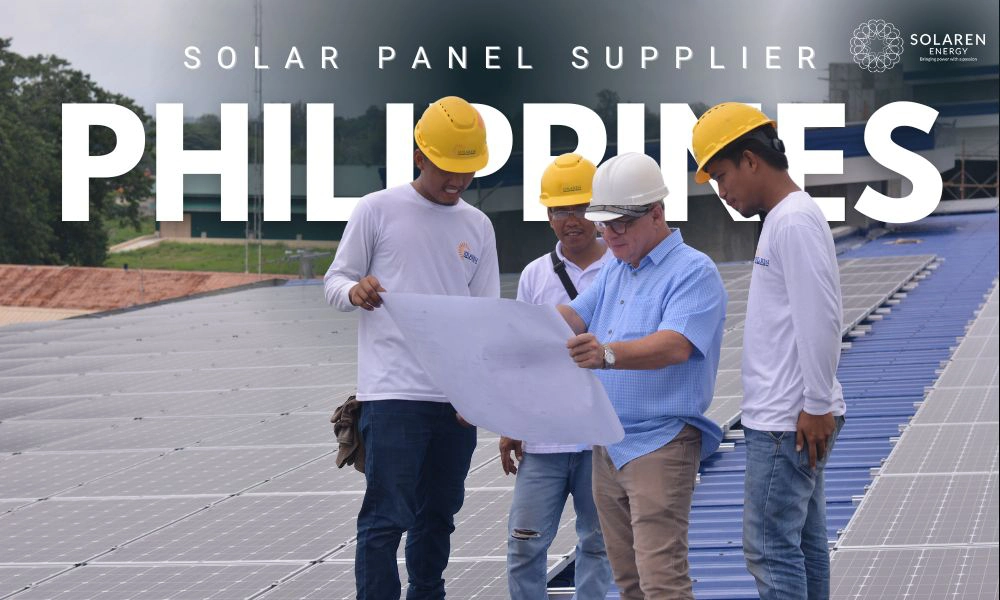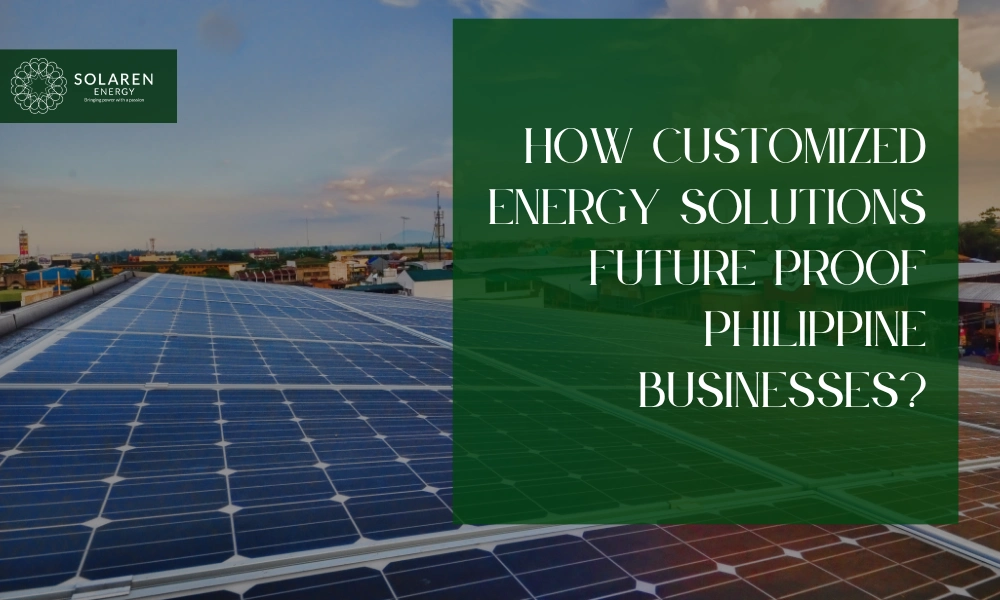Solar Power FAQs Philippines
Commercial FAQs
How do you make sure panels and components are genuine and high quality?
We guarantee that each panel will have a serial number registered in the manufacturer’s database. We inspect the flash-test information of your batch in the factory. We maintain batch certificates and provide EL (electroluminescence) pictures upon request. We install high-efficiency, bifacial, glass-glass (BC) panels, which are not relabelled but are of tier-one manufacturers.
Which inverters do you use, and which suit our site?
We have Tier 1 string inverters with local parts and service. We collaborate with SMA on large and open rooftops, and with Enphase on complex and shaded roofs. We sometimes offer budget-friendly options, depending on local grid conditions.
Do you subcontract the critical work?
No. Everything, from design and construction to quality checks and commissioning, is done in-house. All of our trained crews operate under Solaren management and are accountable at one level.
Are your systems designed for Philippine typhoons and heavy rain?
Designs exceed local wind regulations. All our systems have load-tested stainless-steel anchors and sealed penetrations. We fully warrant our roof workmanship.
How do you manage electrical safety on site?
We have proper labelling, fusing, surge protection, and DC isolators. Written shutdown procedures and lock-out/tag-out procedures. During the handover, we provide complete witnessing and a briefing to your team.
How does heat affect performance?
High temperatures reduce output. We plan systems to facilitate airflow and select equipment that is specifically designed for local use in the heat. The effects of temperature are already forecast into our yield forecasts.
What is a realistic payback period?
For a cash purchase, the typical timeframe is 3 to 6 years. Driven by many factors, such as roof direction, energy export approvals, and your working hours. We provide a transparent model with testable assumptions.
What savings can we expect on our bill?
Most sites lower their daytime rates by 20-45%. Additional savings can be applicable in cases where export credits are available.
Should we buy, take a loan, or sign a power purchase agreement (PPA)?
Buy: Maximum long-term liquidity and 100 per cent ownership.
Loan: You are the owner of the asset; repayment can be saved.
PPA: No initial fee; charge per kilowatt-hour at an agreed rate.
Why do cable lengths matter?
Long cable runs add costs to installations. There are also losses to consider. We optimize designs to account for this and to safeguard returns.
What do you need to price our project quickly?
Ideally, Electricity bills for twelve months. Typical load profiles and any scheduled changes to the load. Full site address.
Do you handle permits with our utility (e.g., Meralco, Tarelco, VECO, Davao Light)?
Yes, we normally handle utility permit processing and coordination. We will need local assistance with issues relating to the LGU.
How long will installation take, and will it disrupt operations?
Before commencing work, we will agree on a strict schedule for installation. We will clearly communicate logistics, timelines, and expectations. The process is usually much faster than expected.
Can we export surplus power?
The current rules state that the export of surplus energy is limited to system sizes of 100 kWp and below. Careful planning is essential if no export is possible, because power may need to be curtailed. This dramatically affects ROI
How do we monitor performance and savings?
Yes, we provide access to a sophisticated and live performance portal, which logs both power generated and power consumed. This system allows complete transparency and ability to monitor your savings.
Do you hold spare parts locally?
We maintain an inventory of most key accessories and electrical essential replacements. If replacements are not available, we have a fast turnaround time with our service partners. Our goal is to maintain system operations.
Will the roof leak after installation?
This is a common misconception. Roof mountings are sealed and always positioned at the roof apexes to prevent water ingress. Each fixing point is additionally sealed. Warranties apply to roof installations
What warranties do we get?
Warranties typically last 30 years for module performance and between 5 and 25 years for inverters (if extended). Every item is covered for at least five years, and will be explicitly explained before approvals.
What happens after a severe storm or an electrical fault?
If required, remote diagnostics. On-site safety inspection, thermal scan inspections, and repairs. Manufacturer warranty and insurance claims assistance, should it be required.
How often should panels be cleaned?
Typically, two to three times a year. Coastal or dusty sites sometimes require more frequent. Cleaning schedules can be easily established according to performance data.
What uptime should we expect?
You should expect near 100% uptime, but systems are often dependent of the utility. Location is a key consideration.
How much roof area do we need per 100 kW of solar?
In the range of 450-600 m 2, based on the size of the panels, their tilt, the spacing between panels, and the access ways.
Is solar suitable for cold storage?
Solar is ideal for cold storage. Loads are often significant, constant, and perfect for planning PV installations.
Can you work with our generators and automatic transfer switches?
Yes, this is a critical aspect of any planning and installation. There are many misconceptions surrounding these issues, and we need to closely work with your team to ensure safety and smooth operations.
Is solar suitable for hospitals and clinics?
Yes, most certainly! These loads are typically ideal for planning a Solar PV system as loads are constant and predictable.
What about malls and retail centers with weekend peaks?
We would generally recommend that these facilities size systems to peak loads during normal operations. Planning for weekend spikes is potentially a waste of CAPEX
Who owns the system data?
You do. The data is entirely secure and separate from your everyday operations.
What’s the next step to get a formal proposal?
Please send us your utility billings, location, and roof sizing. We can quickly start preparing a quotation and timeline
Industrial FAQs
Can solar handle heavy industrial loads and machinery start-up currents?
Are your systems safe for factories with high-voltage lines and multiple transformers?
Yes. We integrate with MV switchgear up to 34.5 kV and coordinate protection settings with the utility. Licensed engineers handle all work under strict safety codes.
Do you train our staff on electrical safety?
Yes. We can and will provide full training, system documentation, and shutdown steps. Arc-fault and ground-fault protection are standard features.
What ROI can industrial clients expect?
Typical payback is 3 years to 5 years with 20 – 35% ROI, depending on tariff and load. Large sites can save tens of millions of pesos yearly.
Can solar help with demand charges?
Solar mostly offsets kWh use. With batteries or load-shifting, demand (kVA) charges can also drop significantly. We can study your load data to recommend the best strategy.
Can solar stabilize our long-term energy costs?
Yes. You lock in part of your power cost for 25+ years, protecting against tariff rises, unexpected economic shocks, and fuel price swings.
Can you integrate with our diesel gensets or cogeneration units?
Yes. We align generator logic and ATS controls for smooth operation. We will test with your team and local utility.
Is solar compatible with our power factor correction system?
Yes. Inverters run near-unity power factor and can support reactive power if required. Due to common utility requirements, capacitor banks and APFC panels are reviewed during design.
Can we expand the system later?
Yes. Systems can be designed to be modular and future-ready, including battery options.
What uptime should we expect in an industrial setting?
Over 99% is not unusual, with local service teams, remote monitoring, and defined response times.
How often should panels be cleaned in dusty zones?
Normally, every 2 – 3 months in dusty zones. This can be established quickly based on performance data.
What happens after a power fault or storm?
We run remote diagnostics, inspect on-site, and assist with insurance or warranty claims. We are always available for after sales and support, unlike the majority of competitors.
Residential FAQs
Is my home a good fit for solar?
Home solar is optimal when daytime generation is utilized; however, with net metering, nighttime loads can also be offset. We can initially check and verify your utility bills and schedule an ocular inspection if required.
How big a system do I need?
This will depend on your utility bills. Ideally, the bills from the last 6 months would be used to calculate your requirement. The average household typically requires between 3 and 10 kW of solar power. Sometimes, more so if you have AC or other loads running most of the day.
How much roof area per 1 kW of solar?
Approximately 4.5 – 6 m² /kW depending on panel wattage and spacing.
Will solar work during brownouts?
No. If a grid-tied system, disconnection during a brownout is a necessary and sensible safety measure. You would require a battery and a hybrid inverter to operate during an outage.
How much can solar cut my electric bill?
In many homes, when we perfectly match the system size to your usage, daytime costs are reduced by 30-60 percent. Additional credits will offset additional charges by exporting to your utility.
What is a typical payback period?
A cash purchase often takes 4-5 years. This depends on your electricity cost, time of use, and system size. We will present a straightforward, easy-to-understand payback model for your consideration.
Do you offer financing?
Yes. We can provide access to bank loans and credit card instalment plans.
Will my bill go to zero?
This is possible, and largely depends on the system design and size. Many of our customers set this as their goal: to start smaller and gradually increase the system size as their budget permits.
Which panels do you install?
We only install legitimate tier-one, high-efficiency bifacial, glass-glass, or BC panels. Most of our modules are available in all-black for a clean, premium appearance.
How do you make sure panels aren’t fake?
We conduct rigorous audits of our suppliers and require detailed factory test data and certificates. We can provide you with information upon request.
Which inverters do you use for homes, and what are the options by budget?
We usually recommend German SMA inverters, which have an exceptionally long design life. We have fully operational systems that are still running, even after ten years or more. We can offer lower-budget options, such as those from the British manufacturer Sunsynk. Full details are available on request.
String inverter or microinverters, what’s better for my roof?
String inverters are far more affordable for open and unshaded roofs. Microinverters perform well if your roof has multiple angles or shaded areas.
Do I need a battery?
A battery system is more expensive than a grid-tied system. If you wish to start with a lower budget, it is possible to install a hybrid grid-tied inverter and add battery capacity at a later time.
How big should the battery be?
You must compute carefully, as the cost can be prohibitive to cover complete household loads. It is best to scale the size of the backup to your needs and priorities, and carefully assess and design.
Will the roof leak?
No, this is a widespread question, and we are proud to say that our roof fixings rarely cause issues. Our roof workmanship is under warranty.
Can it handle typhoons and heat?
Yes. Fully compliant with building and wind load codes. We install load-tested anchors and provide adequate airflow under panels. Our equipment is designed for use in the Philippine tropical climate.
What about older roofs?
We need to check and establish whether it is advisable to place a solar PV system on a roof that will not last more than a few years. You can ask us for an honest assessment.
Do you handle permits?
Yes. We handle the entire process, including utility submissions, meter changes, and witness tests. We may require assistance with the LGU for your existing permits and certificates.
Can I export power to the grid?
Yes. The local utilities approve all of our systems.
Will my electric meter change?
Your meter will be changed to a bi-directional unit by the utility. We coordinate this.
How long does installation take?
Typically, just a few days on-site once materials are delivered. We can work around your schedules.
How do I see my savings?
You have a web and app portal that provides live production, usage patterns, and notifications. Additionally, reports can be generated on a monthly basis. Of course, your utility bill will reduce.
How often should panels be cleaned?
Two to three times a year on most houses. With our online monitoring, cleaning can be planned based on performance data.
What maintenance is needed?
You can inspect your system visually, but mostly just washing is required. Most of our customers plan to replace the inverter every 10-15 years or so.
Do you keep spare parts locally?
Yes. Our inventory includes complete inverter units, spares, fans, fuses, and necessary replacements.
Is a solar system noisy?
Panels are silent. Most household inverters are silent.
What warranties do you provide?
We offer comprehensive product and performance warranties for our complete systems, as well as workmanship.
How do you handle electrical safety?
We ensure that proper fusing and surge protection, labelling, and shutdown procedures are documented. We can train your family on how to operate your system safely. We will provide comprehensive electrical plans, and the LGU and utilities will approve the system.
Who owns the data from my system?
You do. The online portal is completely safe and protected from intrusion, and it is highly secure.
Can I add more panels later?
Yes, of course. Assuming there is space on the roof, and adequate inverter power is made available. We can plan for expansion.
Can I install solar on a townhouse or condo?
This is unusual and usually depends on building or HOA regulations and roof rights. We can present documentation should you need to seek approval.
What happens after severe weather?
We can conduct safety inspections and undertake any necessary repairs. We assist with warranty and insurance claims as required, although this is a rare occurrence.
What do you need to give me a quote?
We ask for as many months bills as you have available in the last year. Six months is ideal. An idea of your times of using power (day or night percentages), and an address. This will enable us to start the process.
When can we start?
After you approve the offer, we can finalize the agreement and plan the delivery. Usually, this happens very quickly. Provided we have sufficient documentation, we can start permitting immediately.
SWITCH TO SOLAR PV!





